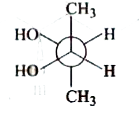A
B
C
D
Text Solution
AI Generated Solution
The correct Answer is:
|
Topper's Solved these Questions
MOCK TEST 5
AAKASH INSTITUTE ENGLISH|Exercise Example|22 VideosView PlaylistMOCK TEST 7
AAKASH INSTITUTE ENGLISH|Exercise Example|42 VideosView Playlist
Similar Questions
Explore conceptually related problems
Knowledge Check
Similar Questions
Explore conceptually related problems
AAKASH INSTITUTE ENGLISH-MOCK TEST 6-Example
- Which of the following compounds contains both ionic and covalent bond...
02:59
|
Play - An atom with atomic number 20 is most likely to combine chemically wit...
02:58
|
Play - Octet rule is not satisfied for which of the following molecules?
02:14
|
Playing Now - The ion that is isoelectronic with CO is
01:17
|
Play - The formal charge on S atom in the following structure is
01:15
|
Play - Elements of which of the following sets has the strongest tendency to ...
02:00
|
Play - Which of the following sequence correctly represents the decreasing ac...
01:34
|
Play - Element A has 3 electron in the outermost orbit and element B has 7 e...
02:09
|
Play - Compound of a metal A is M2O3 , the formula of its halide is
02:33
|
Play - As compared to covalent compounds, electrovalent compounds generally p...
01:03
|
Play - The magnitude of lattice energy of a solid increases if
03:26
|
Play - Which of the following is a hypervalent compound?
04:03
|
Play - Which of the following is a hypovalent compound?
03:28
|
Play - Which of the following is an odd electron molecule?
05:29
|
Play - The lattice energies of the oxides of Mg, Ca, Sr and Ba follow the ord...
02:28
|
Play - Which of the following is the correct order of bond angle in H2S, NH3,...
01:44
|
Play - Give the correct order of bond lengths x, y and z in
01:58
|
Play - Which of the following statements is/ are correct about lattice enthal...
03:54
|
Play - Find out the incorrect order of bond angles
05:15
|
Play - Anhydrous AlCl3 is covalent compound. Select the correct statement reg...
08:53
|
Play



